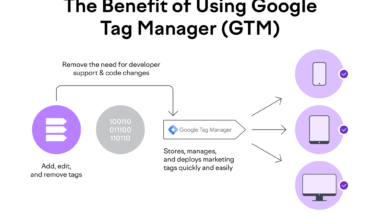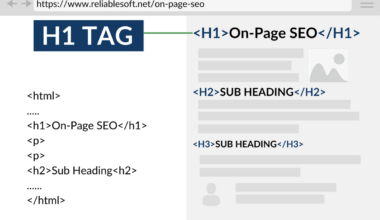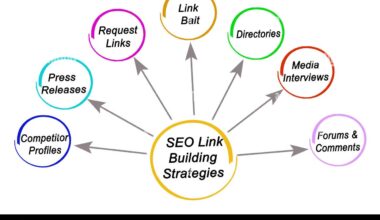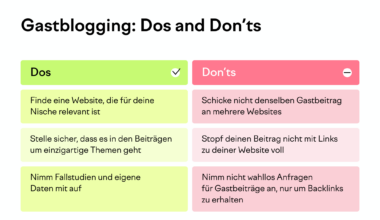Introduction to Mobile SEO
As mobile devices continue to gain popularity, it’s essential for businesses to optimize their websites for mobile search engines. Mobile SEO is the process of optimizing your website for mobile devices to improve its visibility and ranking on search engines. The primary goal of mobile SEO is to provide an exceptional user experience for mobile users and ensure that they can access your website from any device seamlessly.
The number of mobile users is growing at an alarming rate, with over 5.22 billion unique mobile users globally. This figure is expected to rise to over 7 billion by the end of 2021. As a result, businesses must adopt mobile SEO strategies to improve their visibility and rank higher on search engines.
One of the primary reasons why mobile SEO is vital is that it ensures that your website is mobile-responsive. A mobile-responsive website adjusts to fit the screen size of any mobile device. This makes it easier for users to navigate your website and find what they’re looking for without having to zoom or pinch the screen.
Mobile SEO also involves keyword optimization, site speed, and user experience. Mobile users expect fast-loading websites that are easy to navigate. Site speed and user experience play a vital role in determining your website’s ranking on search engines. If your website takes too long to load or has a poor user experience, it will negatively impact your ranking on search engines.
In addition to the above, local SEO is also an essential aspect of mobile SEO. Local SEO involves optimizing your website for local searches. By optimizing your website for local searches, you can improve your visibility and ranking on local search engines. This is particularly important for businesses that rely on local customers.
In conclusion, mobile SEO is crucial for businesses that want to improve their visibility and rank higher on search engines. By adopting mobile SEO strategies, businesses can ensure that their websites are mobile-responsive, optimized for keywords, and provide an exceptional user experience. This will ultimately lead to more traffic, higher engagement, and increased conversions.
Importance of Mobile Responsiveness
Mobile responsiveness is an essential aspect of mobile SEO and plays a crucial role in determining your website’s visibility and ranking on search engines. A mobile-responsive website ensures that your website is accessible and easy to navigate on any mobile device, regardless of its screen size. Here are some reasons why mobile responsiveness is crucial for your website’s success:
1. Improved User Experience:
A mobile-responsive website provides an excellent user experience for mobile users. A website that is not mobile-responsive can be frustrating for users as they have to zoom or pinch the screen to read the content or navigate the website. This can lead to a high bounce rate and negatively impact your website’s ranking on search engines.
2. Higher Mobile Traffic:
As more people use their mobile devices to browse the internet, having a mobile-responsive website can help you attract more mobile traffic to your website. This can lead to more engagement, higher conversions, and ultimately, more revenue for your business.
3. Better SEO Performance:
A mobile-responsive website has a better chance of ranking higher on search engines than a website that is not mobile-responsive. Google and other search engines consider mobile responsiveness as a ranking factor when determining a website’s position on search engine results pages (SERPs).
4. Cost-Effective:
Creating a mobile-responsive website is a cost-effective solution compared to creating a separate mobile website. With a mobile-responsive website, you only need to design and develop one website that adjusts to fit any mobile device, which can save you time and money.
To ensure that your website is mobile-responsive, you can use responsive design frameworks such as Bootstrap or Foundation. These frameworks provide a mobile-first approach to web design and enable you to create a website that is optimized for mobile devices.
In conclusion, mobile responsiveness is a crucial aspect of mobile SEO. By creating a mobile-responsive website, you can improve the user experience, attract more mobile traffic, improve your SEO performance, and save costs. By adopting mobile responsiveness as part of your mobile SEO strategy, you can ensure that your website is accessible and visible to the growing number of mobile users worldwide.
Mobile Keyword Optimization
Mobile keyword optimization is the process of optimizing your website’s content to rank higher on mobile search engines by using relevant and targeted keywords. Mobile users often search for information using different keywords than desktop users, and it’s important to understand these differences to create an effective mobile SEO strategy. Here are some tips for optimizing your keywords for mobile devices:
1. Conduct Mobile Keyword Research:
Use keyword research tools such as Google Keyword Planner or SEMrush to identify the most relevant and popular keywords for mobile searches. Look for long-tail keywords that are specific to mobile searches and have low competition.
2. Use Mobile-Friendly Keywords:
Mobile search queries are often shorter and more conversational than desktop searches. Use mobile-friendly keywords that are easy to type and match the user’s natural language. Avoid using complex or technical jargon, and focus on using simple and straightforward words.
3. Optimize for Voice Search:
With the rise of voice assistants such as Siri and Google Assistant, optimizing for voice search is becoming increasingly important. Use natural language and conversational keywords that match the user’s spoken queries.
4. Optimize for Local Searches:
Mobile users often search for information related to their location, such as “restaurants near me” or “gas stations nearby.” Use location-based keywords such as city names, zip codes, and landmarks to optimize for local searches.
5. Use Keyword Variations:
Use different variations of your keywords to reach a broader audience. Use synonyms, misspellings, and related keywords to create a diverse set of keywords that match different search queries.
In conclusion, mobile keyword optimization is crucial for improving your website’s visibility and ranking on mobile search engines. By conducting mobile keyword research, using mobile-friendly keywords, optimizing for voice search and local searches, and using keyword variations, you can create an effective mobile SEO strategy that targets mobile users and improves your website’s performance on mobile devices. Remember to regularly update and refine your mobile keywords to stay ahead of the competition and attract more mobile traffic to your website.
Mobile Site Speed and User Experience
Mobile site speed and user experience are critical factors that determine your website’s success in mobile SEO. Mobile users expect fast-loading websites that are easy to navigate, and if your website fails to meet these expectations, it can negatively impact your ranking on search engines. Here are some tips for improving your website’s mobile site speed and user experience:
1. Use a Mobile-Friendly Design:
Use a mobile-friendly design that is optimized for mobile devices. Avoid using large images or videos that can slow down your website’s loading time. Use a responsive design that adjusts to fit any mobile screen size, and ensure that your website is easy to navigate with a mobile-friendly menu and buttons.
2. Optimize Your Images:
Optimize your images for mobile devices by compressing their size without compromising their quality. Use image formats such as JPEG or PNG that are optimized for mobile devices, and avoid using large or high-resolution images that can slow down your website’s loading time.
3. Minimize Your Code:
Minimize your website’s code by removing unnecessary elements such as whitespace, comments, and unused code. Use a minification tool such as HTML Minifier or CSS Minifier to reduce the size of your code and improve your website’s loading time.
4. Use Browser Caching:
Use browser caching to reduce your website’s loading time by storing frequently accessed files such as images, scripts, and stylesheets in the user’s browser cache. This reduces the number of requests made to your server and improves your website’s loading time.
5. Test Your Website’s Speed:
Regularly test your website’s mobile site speed using tools such as Google’s PageSpeed Insights or GTmetrix. These tools provide insights into your website’s loading time and suggest ways to improve your website’s speed and user experience.
In conclusion, mobile site speed and user experience are essential factors that determine your website’s success in mobile SEO. By using a mobile-friendly design, optimizing your images, minimizing your code, using browser caching, and testing your website’s speed, you can improve your website’s loading time and provide an exceptional user experience for mobile users. Remember to regularly monitor and optimize your website’s speed and user experience to stay ahead of the competition and attract more mobile traffic to your website.
Local SEO for Mobile Devices
Local SEO is a crucial aspect of mobile SEO that helps businesses optimize their website for local searches. With the rise of mobile devices, more people are searching for local businesses and services on their mobile devices. By optimizing your website for local searches, you can improve your visibility and attract more local customers to your business. Here are some tips for optimizing your website for local searches on mobile devices:
1. Claim Your Google My Business Listing:
Claiming your Google My Business (GMB) listing is the first step in optimizing your website for local searches. A GMB listing provides essential information about your business, such as your address, phone number, website, and business hours. This information appears in Google’s local search results, maps, and Google’s Knowledge Graph. Ensure that your GMB listing is complete and up-to-date with accurate information.
2. Optimize Your Website for Local Keywords:
Optimize your website’s content for local keywords that are relevant to your business and location. Use location-based keywords in your website’s titles, headings, meta descriptions, and content. For example, if you own a restaurant in New York, use keywords such as “New York restaurant” or “best restaurant in New York” to optimize your website for local searches.
3. Include Local Schema Markup:
Include local schema markup on your website to help search engines understand the location and relevance of your business. Schema markup provides additional information about your business, such as your address, phone number, and business hours. This information appears in Google’s local search results and can improve your website’s visibility for local searches.
4. Get Listed in Local Directories:
Get listed in local directories such as Yelp, TripAdvisor, and Yellow Pages to improve your website’s visibility for local searches. These directories provide valuable backlinks to your website, which can improve your website’s ranking on search engines.
5. Encourage Customer Reviews:
Encourage your customers to leave reviews on your GMB listing and other local directories. Positive reviews can improve your website’s visibility and attract more local customers to your business. Respond to customer reviews promptly and professionally to build trust and credibility with your customers.
In conclusion, local SEO is a critical aspect of mobile SEO that can help businesses optimize their website for local searches. By claiming your GMB listing, optimizing your website for local keywords, including local schema markup, getting listed in local directories, and encouraging customer reviews, you can improve your website’s visibility and attract more local customers to your business. Remember to regularly monitor and update your local
Final Thought on Mobile SEO Implementation
In conclusion, implementing mobile SEO is crucial for businesses that want to improve their visibility and rank higher on search engines. Mobile devices are becoming increasingly popular, and optimizing your website for mobile devices can help you attract more mobile traffic, improve your user experience, and ultimately, increase your revenue.
To implement mobile SEO effectively, it’s essential to focus on mobile responsiveness, keyword optimization, site speed, user experience, and local SEO. By adopting a mobile-first approach to web design and optimizing your website for mobile devices, you can ensure that your website is accessible and visible to the growing number of mobile users worldwide.
Regularly monitor and update your mobile SEO strategies to stay ahead of the competition and attract more mobile traffic to your website. Use tools such as Google Analytics and Google Search Console to track your website’s performance and identify areas for improvement.
Remember, mobile SEO is an ongoing process that requires continuous effort and optimization. By following the tips and strategies outlined in this article, you can create an effective mobile SEO strategy that targets mobile users and improves your website’s performance on mobile devices.






















